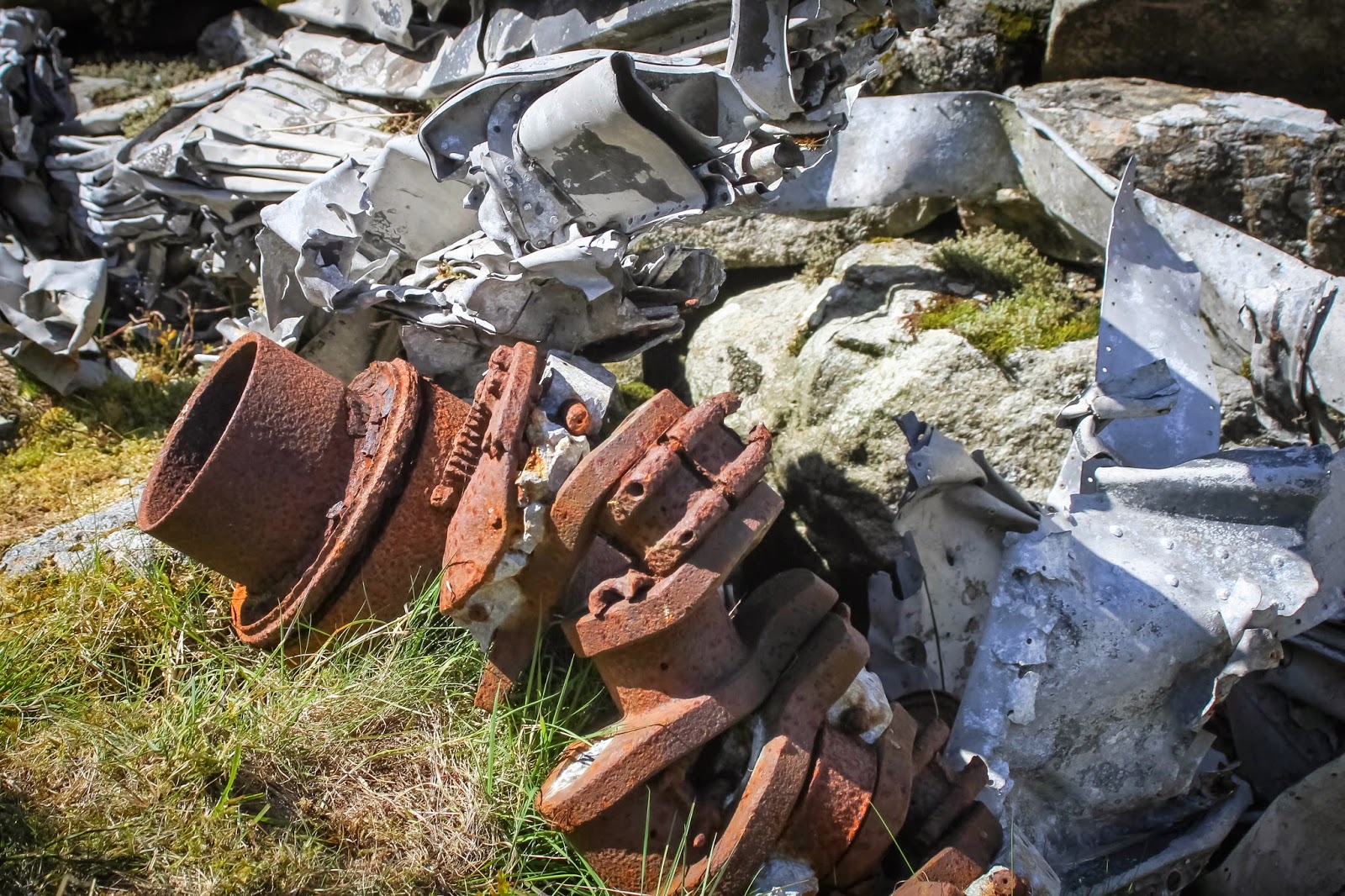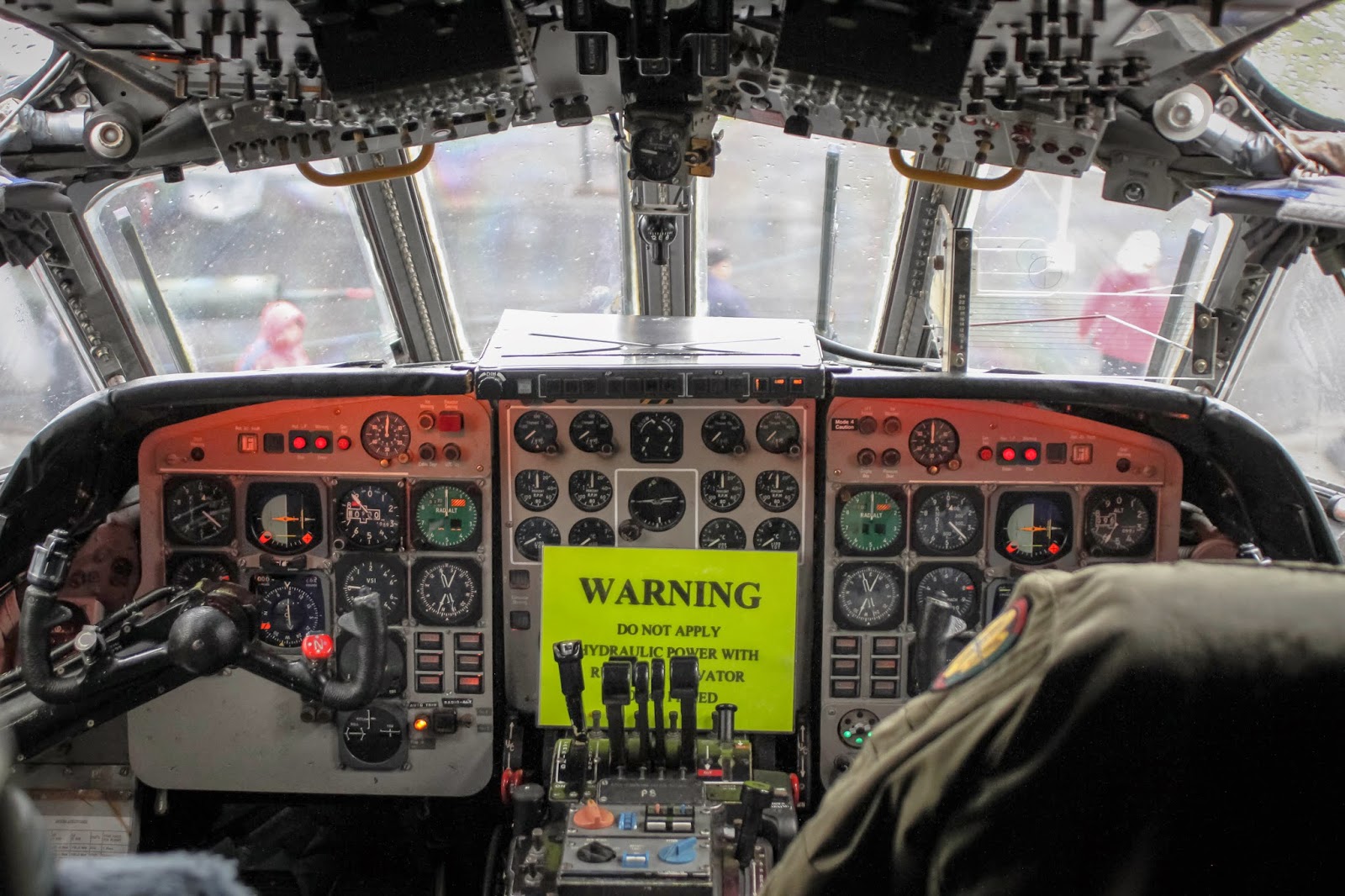An estimated 10,000 military aircraft crashed in Britain during WW2 , the crashes did not stop there though and continue still . This Blog , in early stages of development , shows a variety of details regarding the crash sites and contain photographs that relate the crash sites and wreckage to thier enviroment .
Sunday 20 April 2014
Avro Lancaster NE132
Avro Lancaster NE132
 | |
| Wreckage lays amongst the scree in the foreground |
 |
| Reduction gear still with stubs of the props attached |
On the 6th February 1945 flying out of RAF North Luffenham , Lancaster NE132 crashed into the flank of Rhinog Fawr in North Wales whilst on a cross country training flight .
The aircraft apparently entered a Cumulo-Nimbus cloud, ice formed upon the fuselage and wings causing a catastrophic airframe failure . The aircraft broke up in flight plummeting down into the mountainside .
Fatigue may have played its part for the aircraft had completed many missions over enemy territory before being 'retired' into No. 1653 HCU for use in training .
 |
| Engine parts |
The whole crew of 7 men died.
F/O David H.R.Evans Pilot
F/O Maxwell W. Moon Navigator
Sgt. Charles W. Souden Bomb Aimer
Sgt. George E.W. Hodge Flt. Engineer
Sgt. Arthur D. Gash Air Gunner
Sgt. Harold Neilsen Air Gunner
Sgt. Alfred E. Oliff Air Gunner/Wireless Op
F/O;s Evans and Moon were Australian and members of the RAAF.
Sgt Neilsen was from Chile .
It is known that two of the men managed to bale out but were too low for their parachutes to open properly .
The bodies of two other crewmen, F/O Evans and Sgt Gash have never been found . This makes the main impact point a war grave . Their names are on the Runnymede Memorial . F/O Evans on panel 283 and Sgt Gash on panel 272 .
Sunday 13 April 2014
Handley Page Halifax BB310
Handley Page Halifax BB310
 |
| The memorial just next to the impact point |
 The aircraft exploded upon impacting the fell ,creating a still visible crater within the large scree rocks . The entire crew were killed , probaly instantly .
The aircraft exploded upon impacting the fell ,creating a still visible crater within the large scree rocks . The entire crew were killed , probaly instantly .They were:
F/O Paul B. Stevens RCAF, pilot
F/O Sydney Brookes RAFVR, second pilot
Flt Sgt William ''Alan'' Johnson RAFVR DFM, wireless op / air gunner
Flt Sgt Frank Pess RCAF, wireless op / air gunner
Flt Sgt Harold S. Seabrook RCAF, wireless op / air gunner
Sgt Robert J. Littlefield RAFVR, flight engineer
Sgt William J. Morrison RAFVR, navigator
Sgt Hugh Dunningham RAFVR, wireless op / air gunner
Sgt Dean W. Swedberg RCAF, wireless op / air gunner
F/O Stevens whilst part of the Royal Canadian Air Force was actually an American rather than a Canadian .
Our visit this day was on the 70th anniversay of the crash . The weather was dreadful but cleared long enough whilst we were at the crash site for me to take a few pictures .
 |
| The plaque placed as a memorial in 1994 |
 |
| Paint still adorns this fragment |
 |
| small fragments some showing signs of an intense fire |
Friday 11 April 2014
YAM Thunder Day
Yorkshire Air Museum , Thunder Day visit
 | |
| Dakota engine run , the far engine sounded a little ropey and beched smoke throughout the run , maybe the mix was too rich because it belched flames a plenty when it was shut down . |
 | |
| Canberra with the Victor in the background |
 | |
| Nimrod |
 |
| Nimrod Nav position |
 |
| Cockpit |
Subscribe to:
Posts (Atom)


